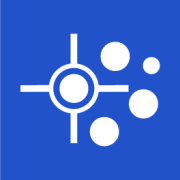Threat Modeling identifies and assesses potential threats to systems, applications, and networks. It helps organizations understand their security posture, enabling more informed decisions about safeguarding assets.
The top 5 Threat Modeling solutions are ThreatModeler Platform, IriusRisk, SD Elements, Arisiun and Devici, as ranked by PeerSpot users in September 2025. ThreatModeler Platform received the highest rating of 8.0 among the leaders, is the most popular solution in terms of searches by peers, and holds the largest mind share of 43.9%.
Threat Modeling guides organizations in evaluating their security landscape, helping identify risks and prioritize mitigative actions. By focusing on understanding potential threats and vulnerabilities, it enables creating effective protection strategies, aligning business processes with security objectives and maintaining compliance with industry standards.
What critical features should be considered?Industries with sensitive data, such as finance, healthcare, and government, often implement Threat Modeling to protect against data breaches. These sectors leverage Threat Modeling to maintain high security levels, ensuring customer trust and regulatory compliance.
Threat Modeling proves helpful for organizations by proactively identifying risks and prioritizing defenses. It enhances the protection of assets, data, and operations, aligning security efforts with business goals and improving resilience against potential attacks.
| Product | Market Share (%) |
|---|---|
| ThreatModeler Platform | 43.9% |
| IriusRisk | 43.9% |
| SD Elements | 6.1% |
| Other | 6.1000000000000085% |





Integrating Threat Modeling in agile development involves embedding security practices into the sprint cycles. You can start by defining security requirements alongside functional requirements during backlog grooming. Ensure security tasks are visible on your sprint board and regularly conduct Threat Modeling sessions early in the design phase. Collaboratively work with your team to identify potential threats and document them in user stories. This ensures continuous risk assessment and fosters a security-first mindset among developers.
What tools can automate Threat Modeling?Several tools can help automate Threat Modeling, making the process more efficient. Tools like Microsoft Threat Modeling Tool, OWASP Threat Dragon, and IriusRisk offer features such as automated risk assessments, on-the-fly threat identification, and customizable templates. These tools simplify creating and maintaining threat models, allowing you to focus on risk mitigation. When choosing a tool, consider factors such as ease of integration with existing workflows, scalability, and community support.
What are common challenges in Threat Modeling?Common challenges include a lack of stakeholder buy-in, insufficient expertise, and maintaining updated models. Stakeholders may underestimate the value of Threat Modeling, so educating them on its benefits is key. Without adequate expertise, teams may struggle to identify threats accurately. Providing training and using collaborative tools can alleviate this issue. Additionally, models can become outdated as systems evolve. Regularly review and update your models to remain aligned with the current system architecture and threat landscape.
How does Threat Modeling help with compliance?Threat Modeling is a proactive approach that helps identify and mitigate security risks early, aiding compliance with regulations like GDPR, HIPAA, or PCI-DSS. By systematically identifying potential vulnerabilities and documenting the mitigation steps, you can demonstrate compliance with security standards. Detailed threat models provide evidence of due diligence and are useful during audits. They also guide the development of secure systems that inherently meet various compliance requirements, saving time and resources in the long run.
What is the role of a security champion in Threat Modeling?A security champion plays a crucial role in advocating for, facilitating, and improving Threat Modeling practices within a team. They act as the liaison between the security team and developers, ensuring security is considered throughout the project lifecycle. A security champion is responsible for driving engagement in Threat Modeling activities, providing guidance, and helping to elevate the security skills of team members. They promote a security-centric culture and ensure that threats are identified, assessed, and mitigated effectively.